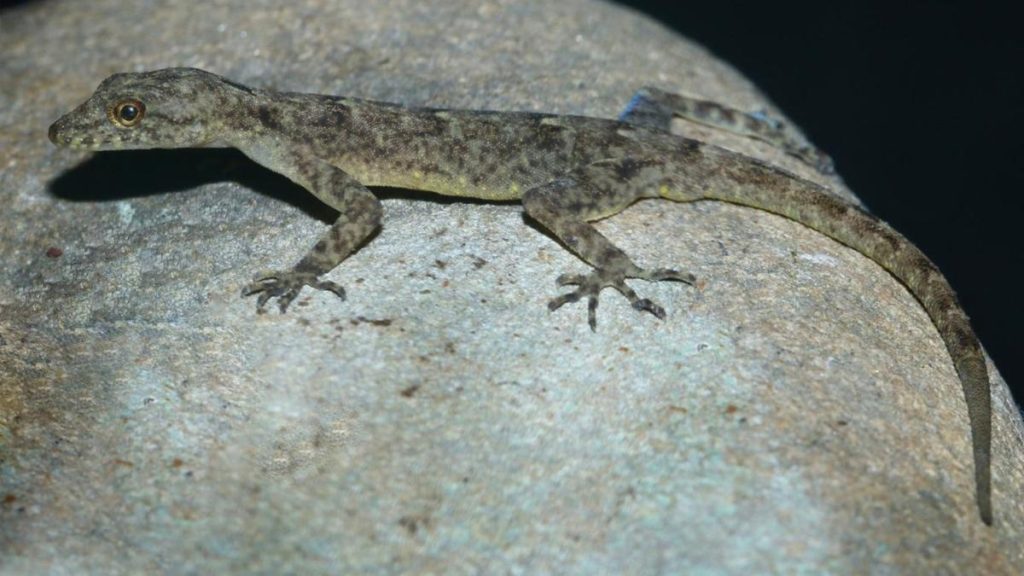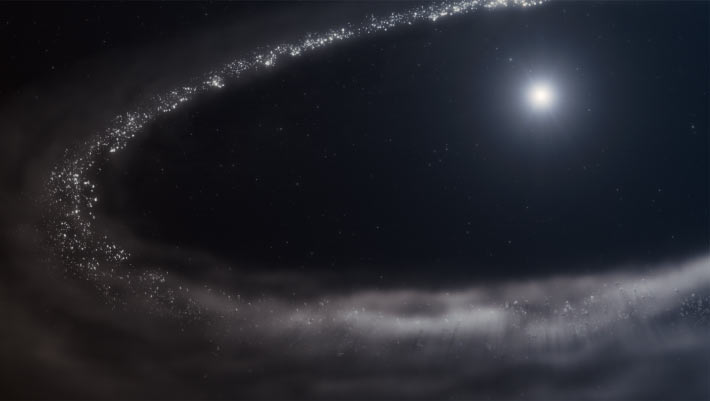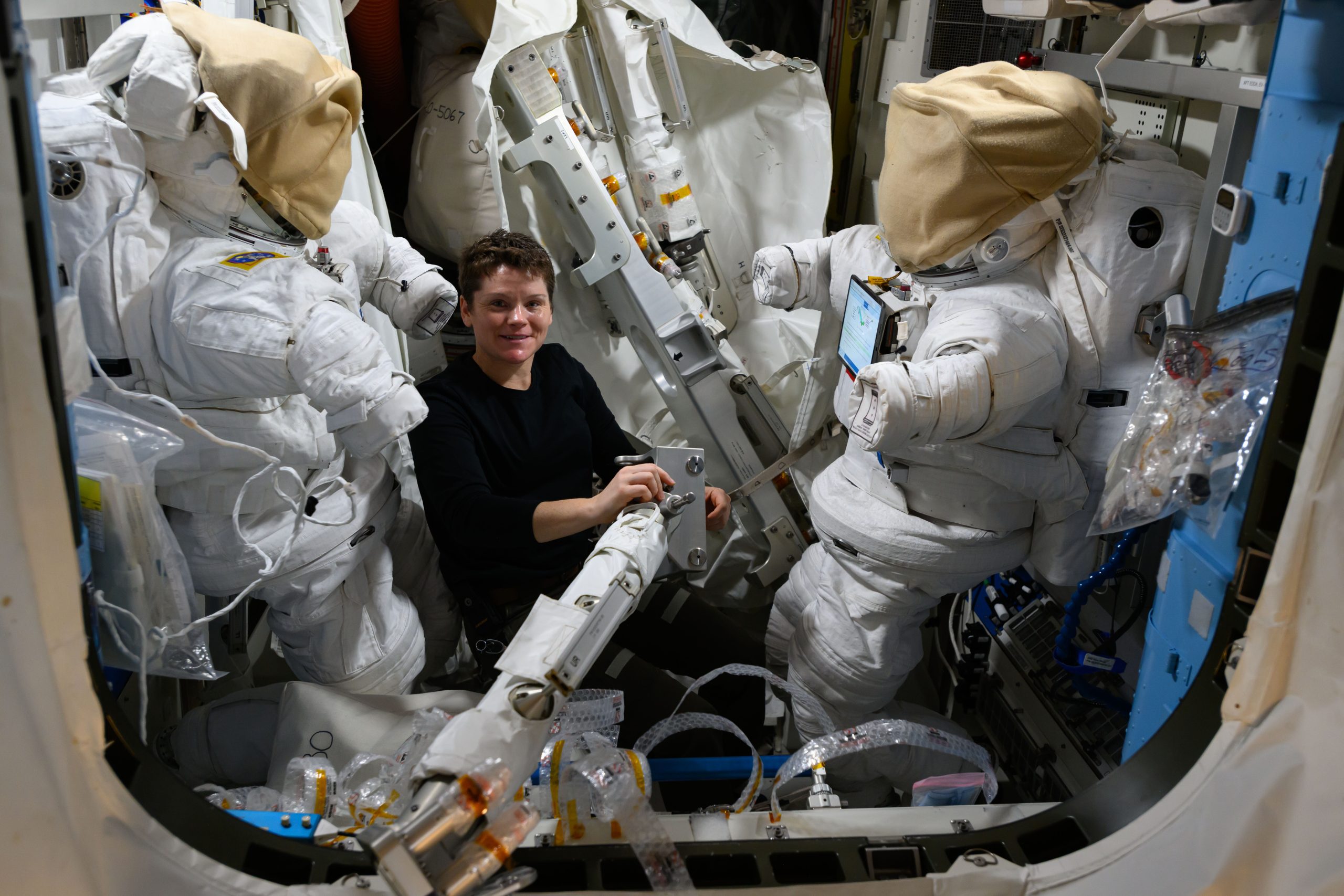Water ice heavily influences the formation of giant planets and may also be delivered by comets to fully formed rocky planets. Using data from the Near-Infrared Spectrograph (NIRSpec) onboard the NASA/ESA/CSA James Webb Space Telescope, astronomers have now detected crystalline water ice in a dusty debris disk that surrounds HD 181327.
An artist’s impression of a debris disk around the Sun-like star HD 181327. Image credit: NASA / ESA / CSA / STScI / Ralf Crawford, STScI.
HD 181327 is a young main sequence star located approximately 169 light-years away in the constellation of Pictor.
Otherwise known as TYC 8765-638-1 and WISE J192258.97-543217.8, the star is about 23 million years old and has a mass about 30% greater than our Sun.
Johns Hopkins University astronomer Chen Xie and colleagues observed HD 181327 with Webb’s NIRSpec instrument, which is super-sensitive to extremely faint dust particles that can only be detected from space.
“HD 181327 is a very active system,” Dr. Xie said.
“There are regular, ongoing collisions in its debris disk.”
“When those icy bodies collide, they release tiny particles of dusty water ice that are perfectly sized for Webb to detect.”
Webb’s observations confirm a significant gap between the star and its debris disk — a wide area that is free of dust.
Farther out, its debris disk is similar to our Solar System’s Kuiper Belt, where dwarf planets, comets, and other bits of ice and rock are found (and sometimes collide with one another).
Billions of years ago, our Kuiper Belt was likely similar to HD 181327’s debris disk.
“Webb unambiguously detected not just water ice, but crystalline water ice, which is also found in locations like Saturn’s rings and icy bodies in our Solar System’s Kuiper Belt,” Dr. Xie said.
Water ice isn’t spread evenly throughout the HD 181327 system.
The majority is found where it’s coldest and farthest from the star.
“The outer area of the debris disk consists of over 20% water ice,” Dr. Xie said.
Toward the middle of the debris disk, Webb detected about 8% water ice.
Here, it’s likely that frozen water particles are produced slightly faster than they are destroyed.
In the area of the debris disk closest to the star, Webb detected almost none.
It’s likely that the star’s ultraviolet light vaporizes the closest specks of water ice.
It’s also possible that rocks known as planetesimals have ‘locked up’ frozen water in their interiors, which Webb can’t detect.
“The presence of water ice helps facilitate planet formation,” Dr. Xie said.
“Icy materials may also ultimately be ‘delivered’ to terrestrial planets that may form over a couple hundred million years in systems like this.”
The findings were published in the May 14, 2025 issue of the journal Nature.
_____
C. Xie et al. 2025. Water ice in the debris disk around HD 181327. Nature 641, 608-611; doi: 10.1038/s41586-025-08920-4



























